Hitting Straight Golf Shots: Key to a Better Game
Finally Start Hitting Straight Golf Shots: Your Ultimate Guide to Face Control and Eliminating the Slice
The fastest ways to improve your golf game is to master hitting straight golf shots.
You can do everything imaginable to increase clubhead speed, add distance, and control your putts. But if you’re taking a hazard-ridden, zig-zagging path to the pin, you won’t get any closer to achieving the scores you want. More importantly, you won’t enjoy the game as much as you could. Nothing takes the fun out of a round like a few too many slices.
Hitting straight golf shots takes practice. You may need to get some clarity on why you keep hitting slices and hooks before you can fix the problem. But even the most casual golfers can learn to consistently hit it straight.
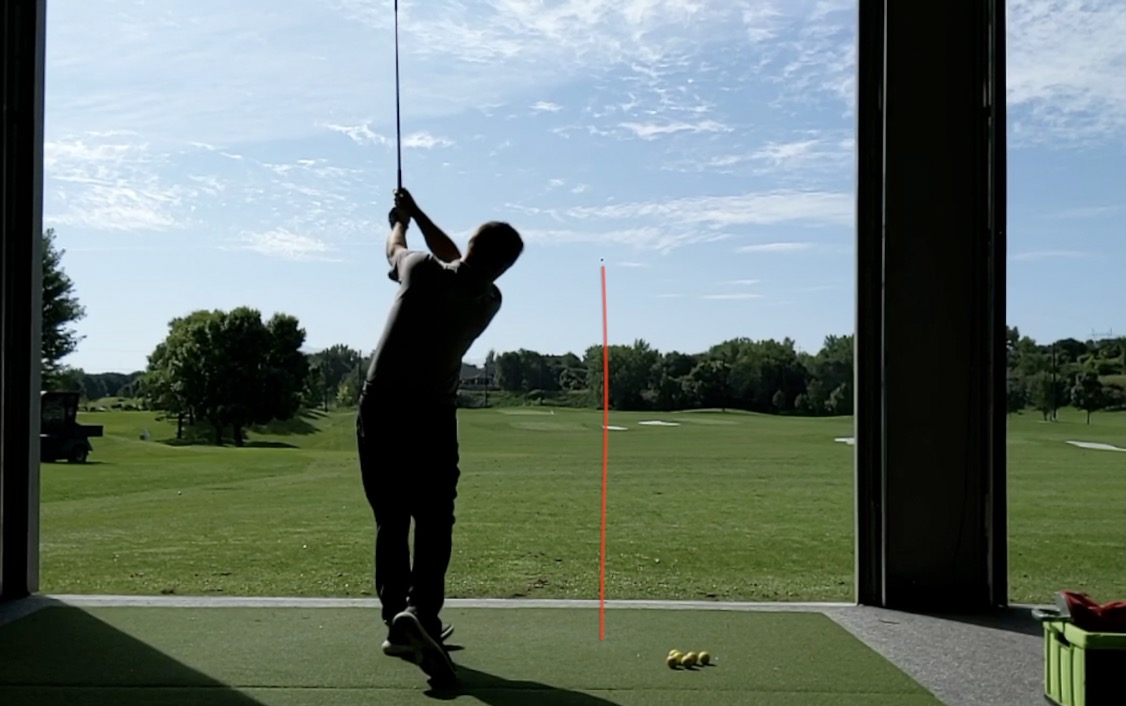
In this comprehensive guide to straighter golf shots, you’ll learn:
- What causes slices and hooks
- Why face control is essential for straight shots
- How you can improve your face control on the golf course today
- Simple, fun drills for practicing straighter shots
Let’s get started.
How to Fix Your Slices and Hooks
One of the biggest questions amateur golfers ask is, “How can I finally stop slicing the ball?”
Those hooks and slices are endlessly frustrating. You pack that swing with all the power you’ve got, you feel like you’re going to get some great distance, then ball goes flying in the wrong direction, right into the trees.
We’re here to tell you that as seemingly relentless as the slice is, there are simple things you can do to fix it. First, let’s cover the basics.
What is a Slice?
For a right-handed golfer, a slice is a golf shot in which the ball curves to the right. If you’re left-handed, a slice is defined as a leftward curve. A slice is also called a “fade.”
What is a Hook?
For a right-handed golfer, a hook is a golf shot in which the ball curves to the left. If you’re left-handed, it’s the opposite—your hooked shots curve to the right.
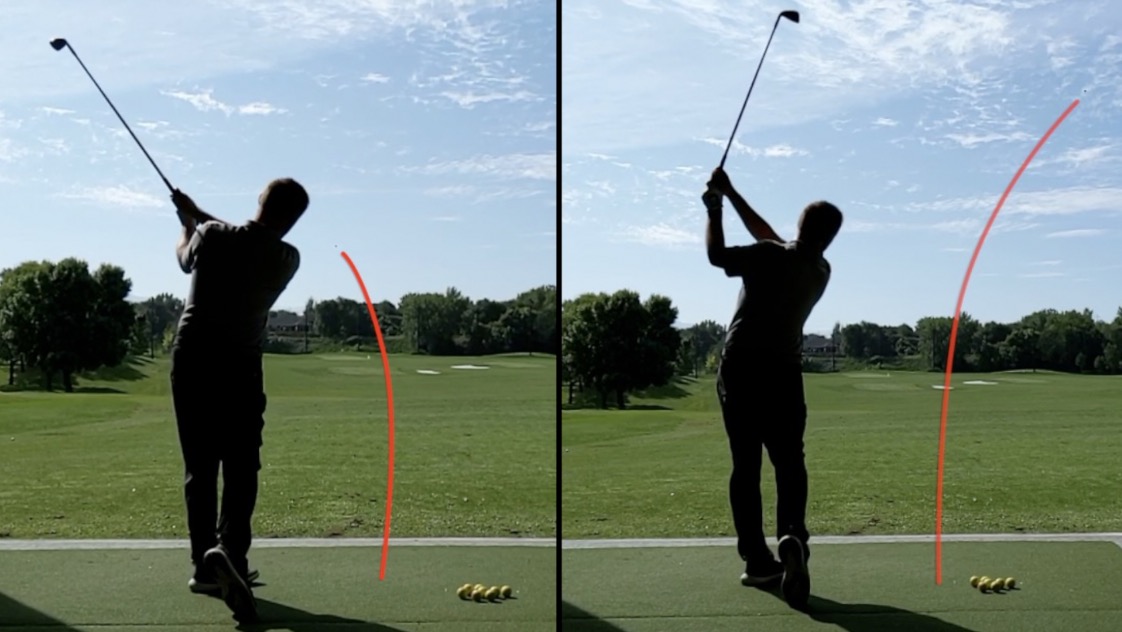
How Face Control Influences Ball Flight
When we talk about any curvature in the ball flight, we are ultimately talking about one essential issue:
The relationship between the club path and club face.
When you deliver the club face back to the ball at the moment of impact, the face is in one of three basic positions.
- Closed: The club face is aimed to the left of the target if you’re a right-handed golfer. (Aimed to the right if you’re left-handed.) A closed club face results in a hook.
- Open: The club face is aimed to the right of the target if you’re a right-handed golfer. (Aimed to the left if you’re left-handed.) This results in in a slice or a fade.
- Square: The club face is aimed directly at the target. This is key for hitting straight golf shots.
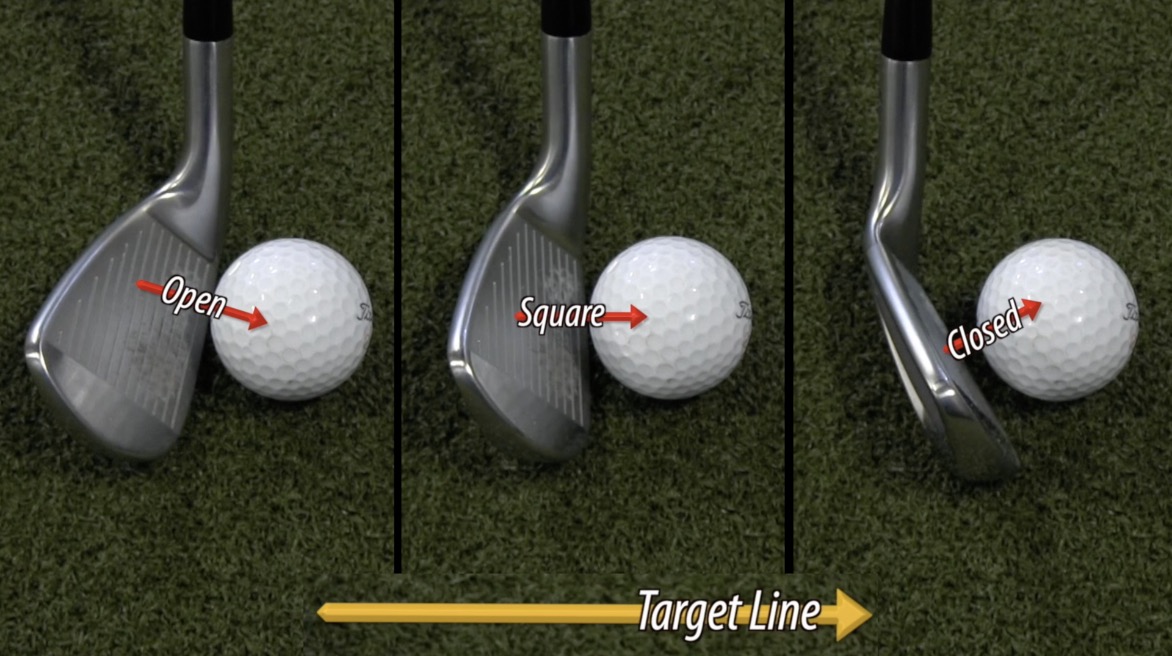
Now, there are several things that happen in your set up and golf swing that influence the position of your club face at address. All of the advice that follows focuses on face control. And we’re going to start now with one of the simplest—but most significant—adjustments you can make to hit the ball straighter.
Proper Grip to Fix Your Slices and Hooks
Your grip has a greater impact on ball flight than you might imagine. Whether you realize it or not, your grip could be rotating the clubface either at setup at the top of your swing or at impact.
Here are the three basic grips you see among golfers.
- Neutral grip: If you look down at the thumb of your lead hand and see 2 – 2 ½ knuckles from your index and middle fingers, you have a neutral grip.
- Weak grip: If you look down on your thumb and can’t see any knuckles on the lead hand, you have a weak grip.
- Strong grip: If you see a lot of knuckles, you have a strong grip. A strong grip results from a clockwise rotation in your wrist. Another way to think of it: in a strong grip, your lead hand looks like it’s revving a motorcycle.
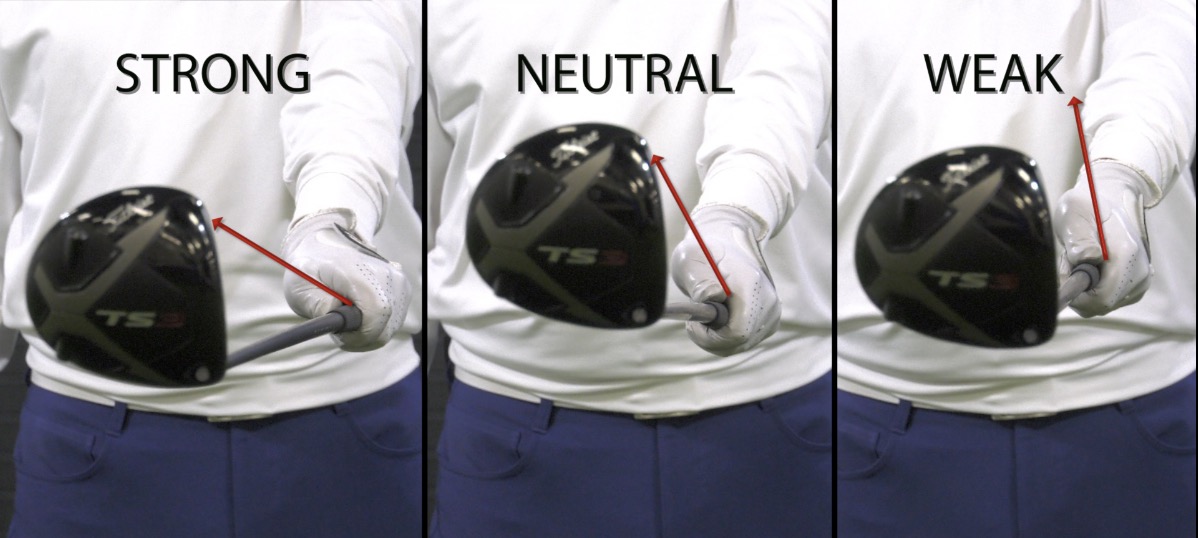
Now, none of these grips is necessarily bad. In fact, you see all three grips among the world’s best golfers. So, it’s not really about good grip versus bad grip. It’s about understanding how the grip influences club face position if you make no other adjustments in your setup or swing.
How Grip Affects Face Control
Let’s break it down by looking at club position at the top of your backswing.
If you have a neutral grip and use a standard setup and club motion, the following things happen at the top of your swing:
- Your lead wrist is flat.
- The club face position and lead forearm match the angle and position of your wrist.
In other words, there is one, clean line at the top of your swing. You should have no trouble delivering a square club face at address.
If you have a weak grip with no other adjustments, your club face will be aimed down toward the ground at the top of your swing. This sets you up to deliver an open club face. As mentioned above, an open face results in a slice.
Strong grippers will find that the club face points up toward the sky at the top of their swing. This creates a closed club face (also called a “shut club face”), and it is almost guaranteed to make you hook the ball.
The Best Grip for Hitting the Straight Golf Shots
So, which grip is best for hitting consistently straight shots?
All things being equal, your best bet is a neutral grip. That’s not to say you can’t hit straight shots with a weak or strong grip. Plenty of touring professionals skip the neutral grip and still pull off a great golf swing. However, you have to know how to make other adjustments in your swing to make sure a weak or strong grip doesn’t compromise your face control.
Right now, we’re just sharing simple fixes for your slices and hooks. And when it comes to golf club grip, the simplest fix is to stick to a neutral grip.
Benefits of Practicing Straight Drives
In a moment, we’ll share some tips on how you can turn this insight regarding your slices and hooks into meaningful practice methods. But first, let’s clarify why hitting straight golf shots should be a top priority in your golf practice.
Many golfers fall into the trap of focusing first and foremost on distance. It’s a natural inclination. The farther you hit the ball, the fewer strokes between you and the hole, right? Plus, who doesn’t love the deep satisfaction of a long drive?
But think back to your worst rounds of golf. What plagued your golf game on those days? Was it that your drives were 20 yards shorter than you wanted them to be?
Or was it that you kept curving the ball, launching it into trees and hazards?
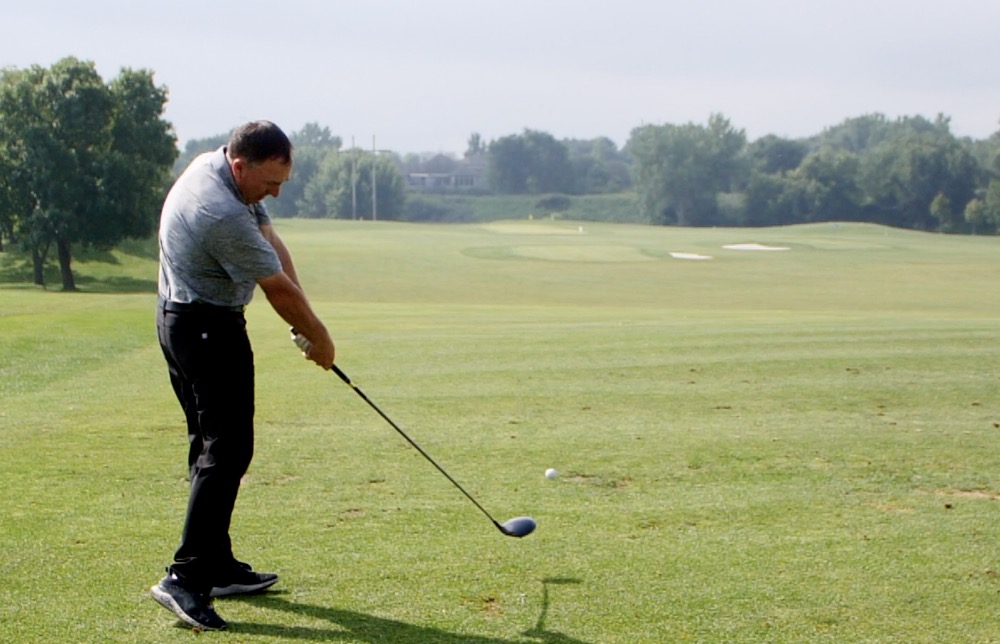
If you have trouble with hooks and slices, your first priority should be learning to consistently hit the ball straight. Once you can do that, you stop wasting strokes on hazards. Every golf swing guides you steadily toward the pin.
Take some time to learn proper golf setup. Learn how to make adjustments in your backswing that help you deliver a square club face at impact. Master those straight drives now, and then you can turn your focus gaining yards.
How Often Should You Practice Straight Drives?
How often you practice hitting the ball straight depends on the time you have to put into it. The bigger issue is that you make this improvement in your game a top priority.
If you like to spend a lot of time practicing at the driving range, we have some great drills for you. We’ll equip you with three drills to help you:
- Eliminate the slice
- Stop hooking the ball
- Improve face control
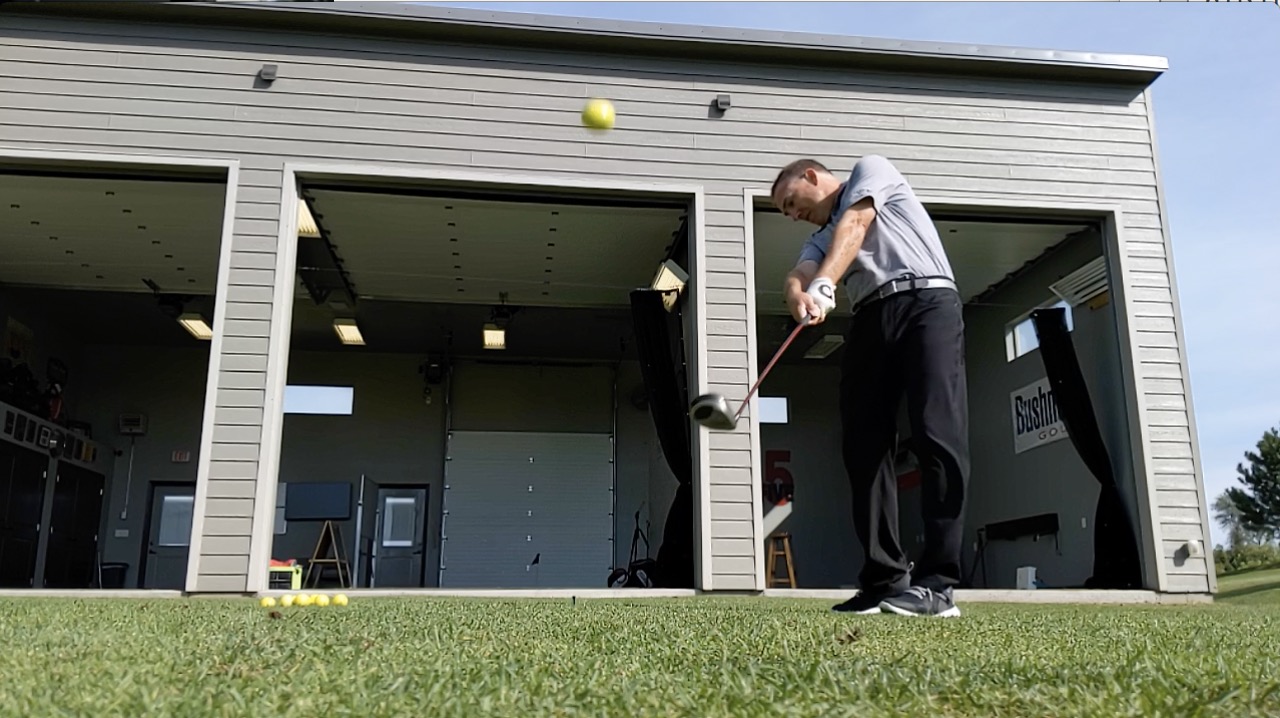
If you don’t have a lot of time to spend on the driving range, no problem. Before we get into the practice drills mentioned above, we’ll share tips for working on those straight shots during a regular round of golf.
Here they are.
Tips for Hitting a Ball Straight Every Time
There are a few small adjustments you can make to start hitting straight golf shots today. These changes to your stance and swing help you hit the sweet spot every single time.
You can apply the following tips to all your iron and driver shots in a regular round of golf. No driving range practice necessary. Though it will take some time for these adjustments to become habit.
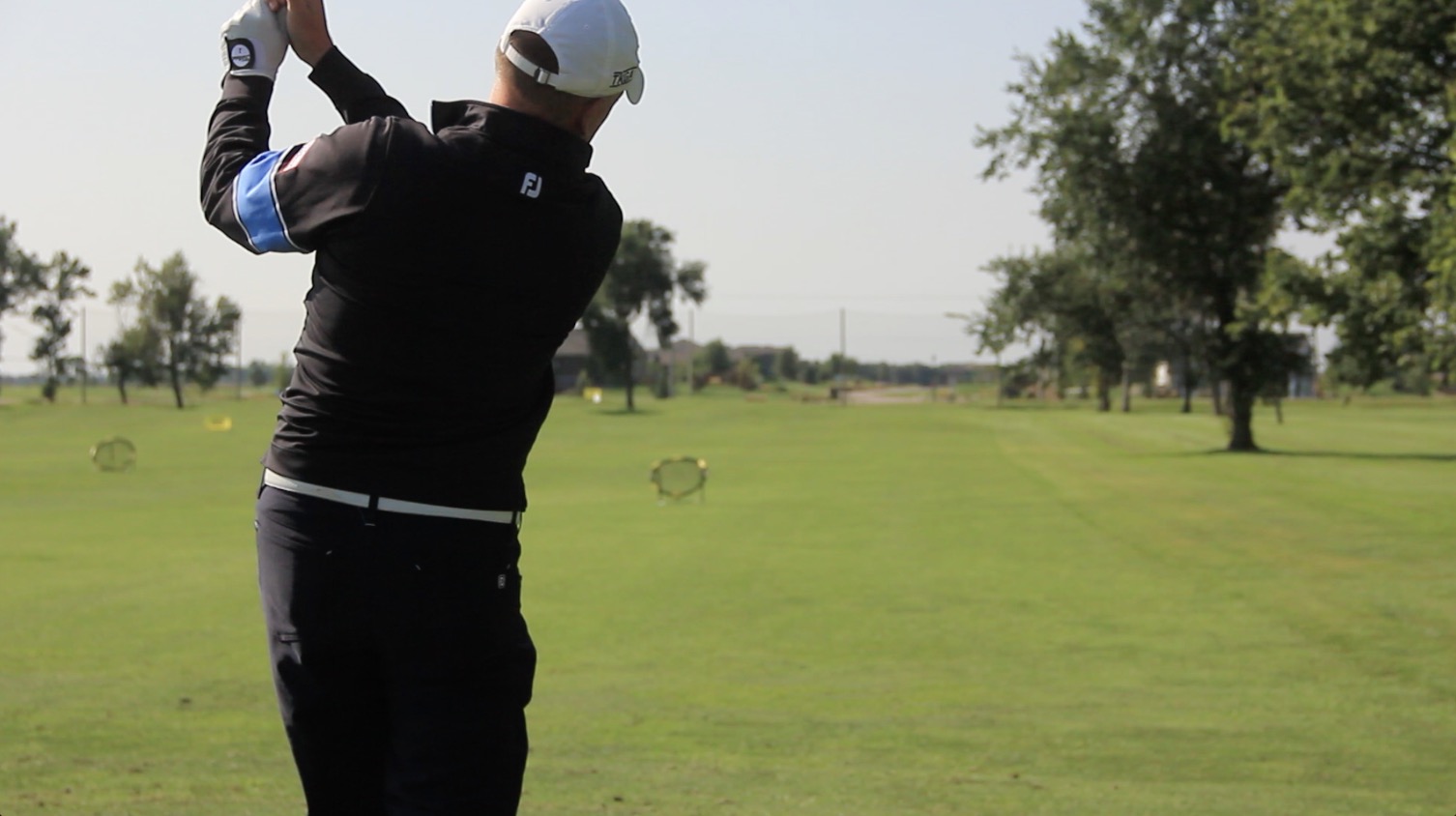
The Best Swing Speed for Straight Shots
First, let’s clear up one common misconception.
You are unlikely to play your best round when you’re swinging out of your shoes.
It’s true that swing speed is essential when you want to add distance to your drives. It’s also true that improving distance is a reliable way to get your scores down. However, when you swing at maximum speed, you lose your ability to control the orientation of your club face. Translation: You no longer control ball flight.
Now, this isn’t only true for amateurs. Even tour professionals don’t hit their drivers at their maximum speed but they know how to properly hit it for a farther outcome.
To hit the ball straighter, you want to swing at about 80-85% of your actual capability. We call this “swinging within yourself.” Swing fast, but not so fast that you can’t control swing plane, club face, and other essential details.
Hitting Straight Golf Shots Off the Tee
Here’s another super simple trick that helps you get more control over your golf swing.
When you hit your driver off the tee, hover the clubhead just above the ground behind the ball in your setup. It’s such a small change, but it makes a big difference. When you set up your drive like this, you naturally smooth out your entire swing motion.
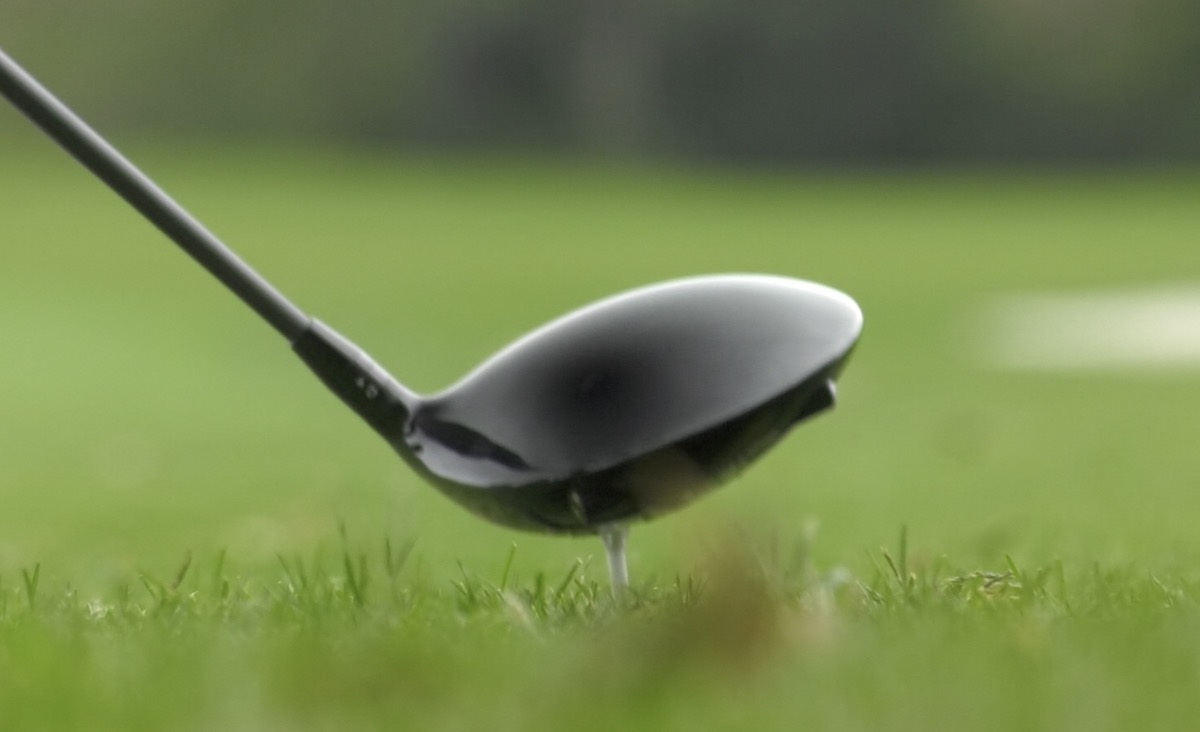
Adjust Your Golf Stance to Fix the Slice
This tip is specifically for golfers who can’t seem to get rid of the slice.
When you set up your golf shot, make these two adjustments to your stance.
- Bump the lead hip toward the target. For a right-handed golfer, this means the left hip shifts over the lead foot.
- Raise the lead arm slightly.
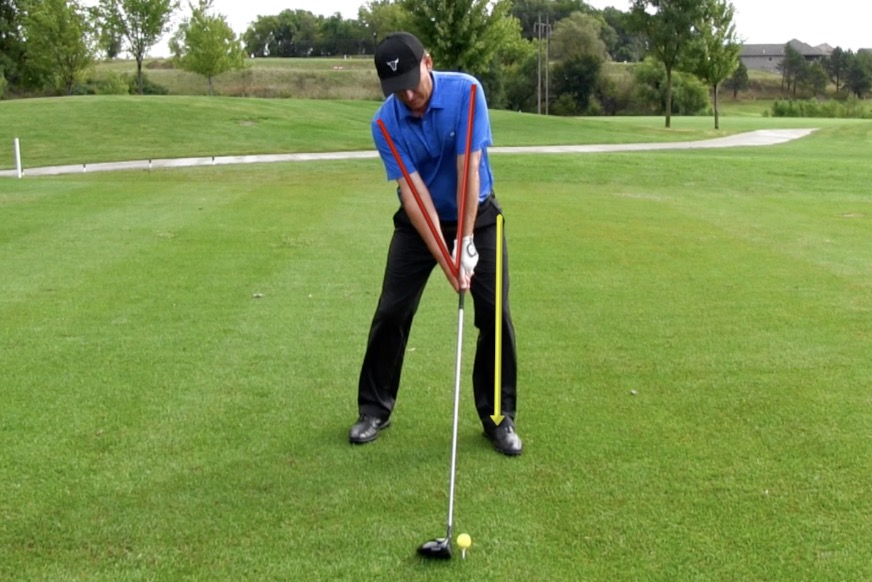
When you make these changes in your stance, you find it’s easier and more natural to swing the club from the inside. As we know from studying the science of the slice, swinging from the inside helps you get rid of that fade. Instead, you get a nice, high draw with driver.
Three Changes to Make on the Golf Course
Here’s quick cheat sheet for putting these tips into practice during your next round.
- Swing at 80-85% of your actual speed capabilities.
- Hover the club above the ground just behind the ball on your driver shots.
- On your iron shots, bump your lead hip toward the target and raise your lead arm slightly at setup.
Now, let’s hit the driving range.
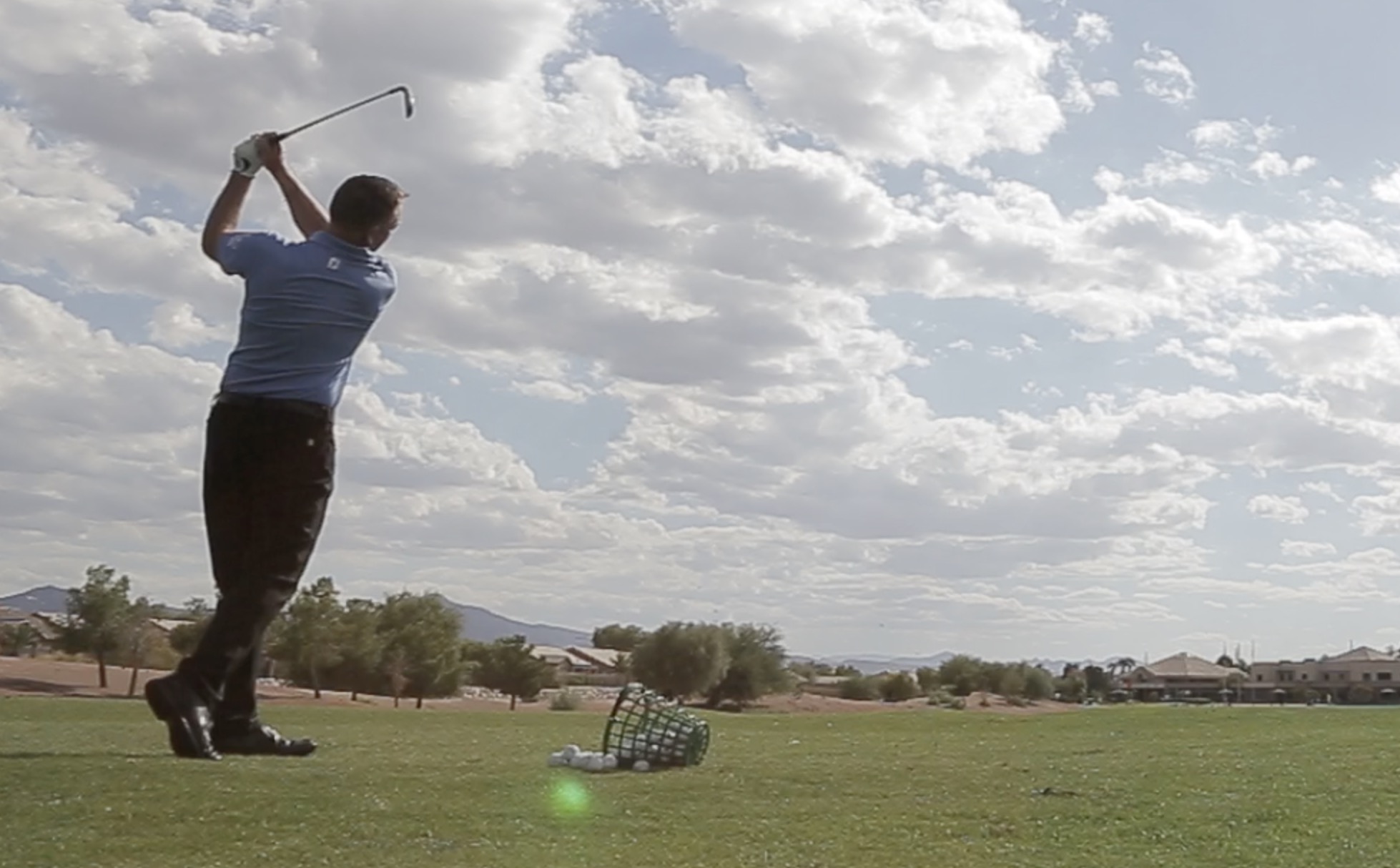
Drills to Practice Hitting the Ball Consistently Straight
Want to be more deliberate in your practice? Whether you’re in your backyard, the driving range, or swinging into a net in your garage, these drills help you hit the ball straight every single time.
Each of these drills is designed to help you master a specific bad habit that could be plaguing your golf shots. Start with the drill that addresses your greatest challenge.
The Slice Drill
If you can’t stop slicing the ball no matter what you do, start with this drill.
You may be skeptical that one drill can help you fix your slice. Many amateur golfers continue to hard fade the ball no matter what they try.
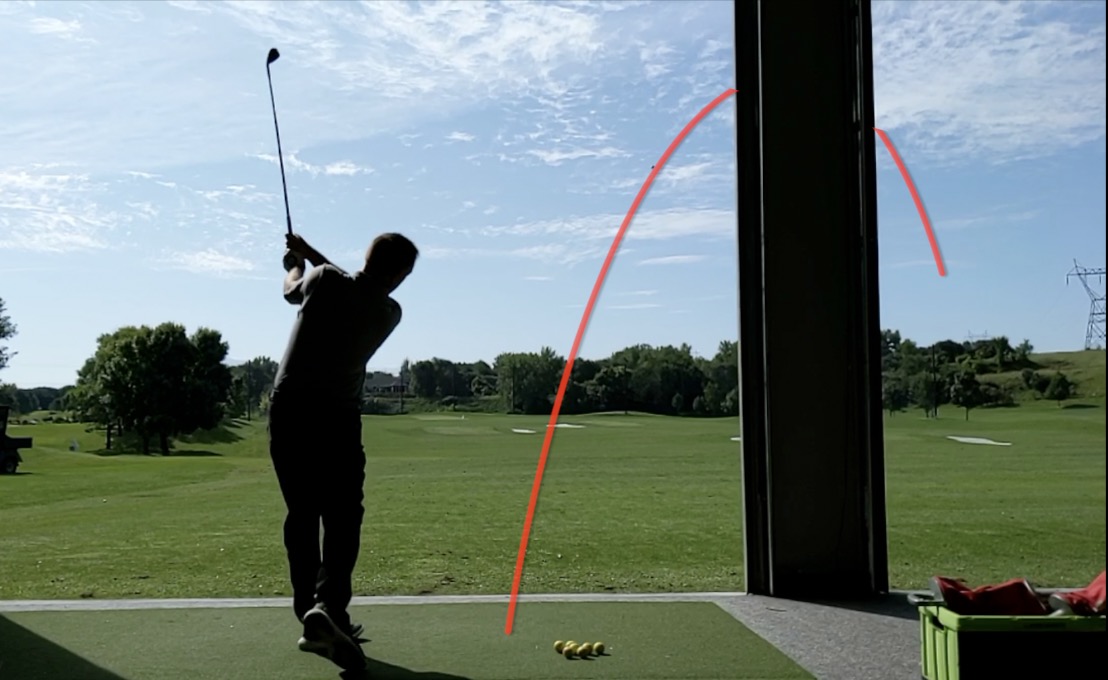
But here’s the good news. It’s only in the last few years that we’ve truly begun to understand what happens when you slice the ball. Modern technology shows us that much of the old advice regarding the slice was dead wrong. So if you feel like you’re stuck in a rut, it’s probably not you. More likely, you’re trying to improve using bad advice.
You can learn a lot more about fixing your slice right here, but for now, let’s stick to one super easy drill that makes a huge difference.
For this drill, you’re going to focus on the position of the knuckles on your lead hand. Or, if it helps, you can stick a tee in your glove and focus on the position of the tee. Whichever is the more helpful visual.
Here’s how it works:
- Take your regular golf setup.
- As you take the club back, allow the knuckles (or tee) on your lead hand to rotate down towards the ground.
- At the top of your backswing, make sure your knuckles or tee are pointed up toward the sky.
- Swing through.
If you’re consistently slicing the ball, you are probably rotating the club face open on your backswing. This drill not only helps you correct this habit, but it trains your body to recognize what it feels like to get the club face in a square position. Run this drill regularly until you can get your knuckles rotating the right way without thinking about it.
The Hook Drill
No doubt you’ve got the routine down by now. The previous drill teaches you how to avoid opening the club face so you can fix your slice. Now that we’re working on the hook, we need to avoid closing the club face.
It’s impossible to keep an eye on your club face throughout the swing. What we love about this drill is that it uses bright colors in your line of vision to help you see what’s happening to the face.
We love using the Sure-Chip training aid for this drill. Sure-Chip is essentially a two-tone ball that fits over your club shaft. Half the ball is red, and the other half is yellow. You position the training aid so the line diving the colors aligns with your clubhead.
If you don’t have the Sure-Chip, you can accomplish the same thing by putting two different color stickers on your club shaft.
For this drill:
Take your regular golf set up.
- As you take the club back, make sure both colors on your training aid or stickers are in balance. To put it another way, the line dividing the colors should be straight up, with yellow and red equally visible.
- Complete your golf swing.
If you hook the ball, you may notice that the color on the back side of the club is the only color facing up on the takeaway. Practice your swing so that the colors are balanced.
Face Control Drill
The previous two drills focus on fixing problems. They help you recognize and correct common errors.
This drill is all about face control. Our objective here is to focus on achieving the correct clubhead angle so you can avoid the slice and hook.
Now, the face control drill emphasizes one important question: What should the clubhead look like at takeaway?
In order to deliver a square club face at impact, the clubhead should be at a 45-degree angle at takeaway. Here’s what we mean by that.
You take your backswing. When the club reaches the position where it’s parallel to the ground, what is the angle of your clubface from your perspective?
If the angle is wider than 45 degrees, the club face is too far open. Less than 45 degrees indicates a closed clubface. If you see a 45-degree angle, you’re in great shape. Then, you want to see that exact same angle on the other side of your swing, after you’ve made contact with the ball. This is how you’ll know you hit the sweet spot.
Here’s how you can practice getting this angle right:
- Take your regular golf setup.
- Take your backswing, careful to create that 45-degree clubface angle on the backswing.
- Swing through. Finish with:
- A 45-degree angle on the clubhead
- Both arms parallel to the ground and extended straight.
If you hook the ball, you’ll likely notice that your clubhead is rotated to the left at the finish. If you hit a slice, you’ll see the clubhead rotated toward the right.
These tips may be a lot to take in at first. Seeing all this advice in one place may make it seem like hitting straight golf shots is a complex process. Bear in mind that as complicated as golf can be, each individual step toward improvement is simple and accessible. Start with the tips that address your greatest struggles, and build on each new improvement. Once you’ve mastered straight shots, you can move on to more complex areas like swing speed and clubhead lag.
Then:
Let Us Know How We Can Help You Play Better Golf
Join us in the comments to ask questions, share insights, or express a difference of opinion. Was this advice helpful? Are there any questions we left unanswered?
Let us know. We love the discussion, and we want to be your top resource for improving yoru golf game.
For more in-depth golf tips, visit us at GreatGolfTipsNow.com. This new video series is completely free and packed with detailed advice to help you play better golf!
 |
|
